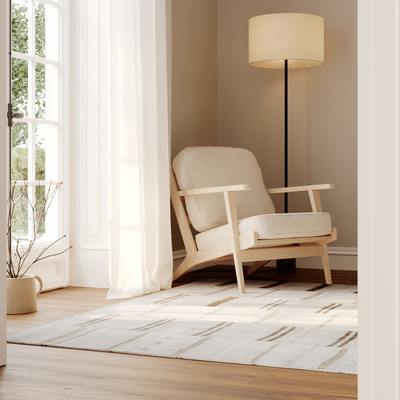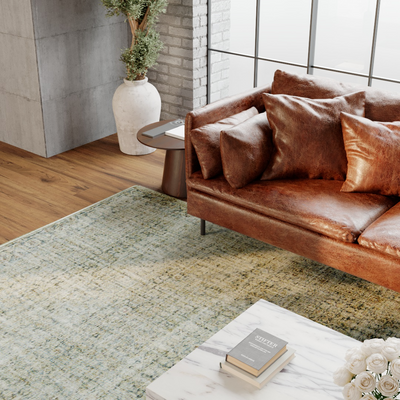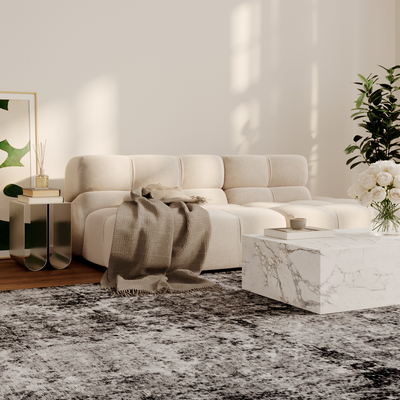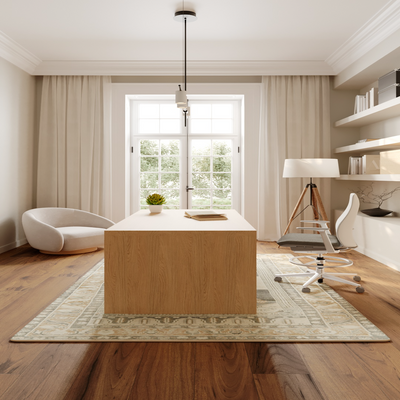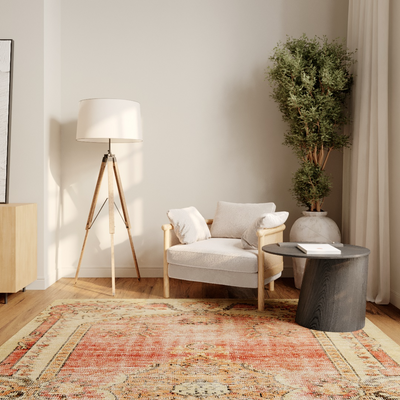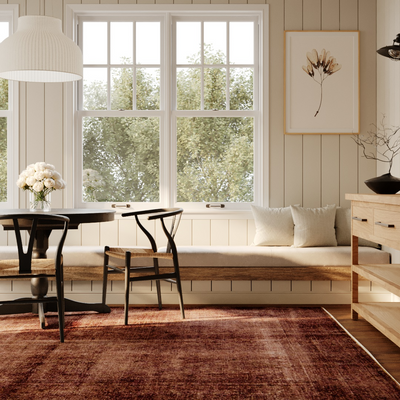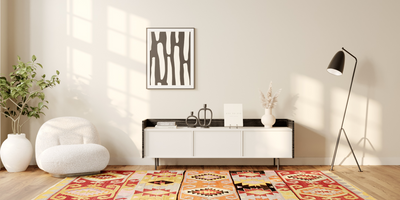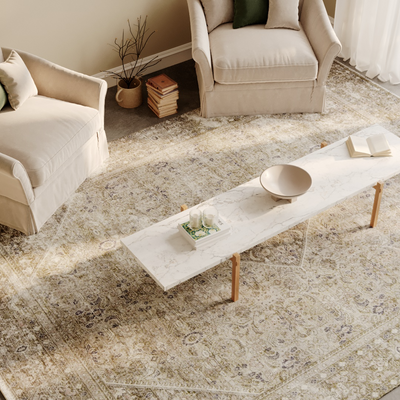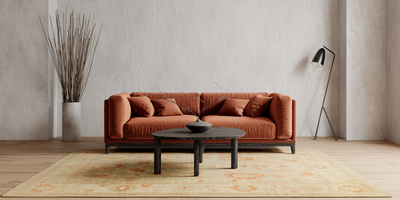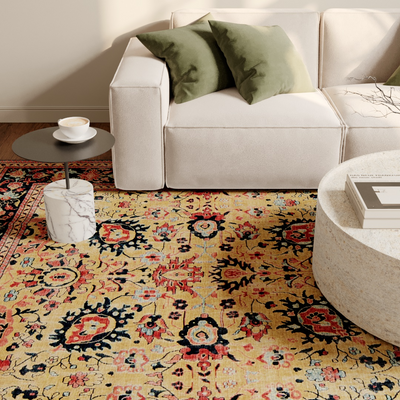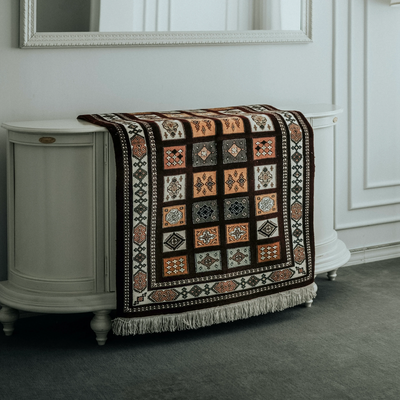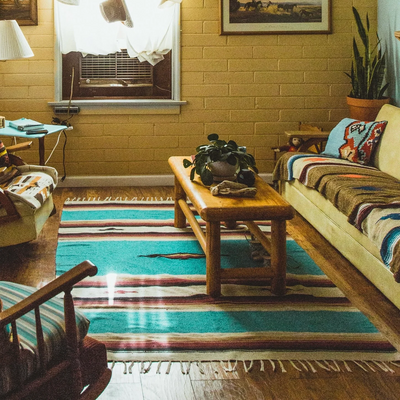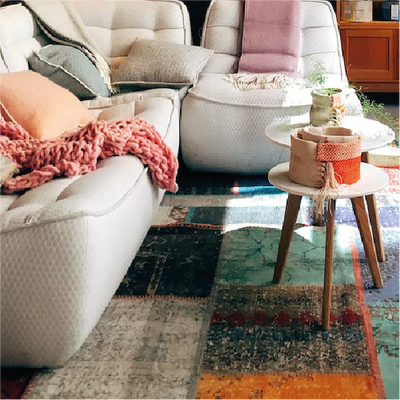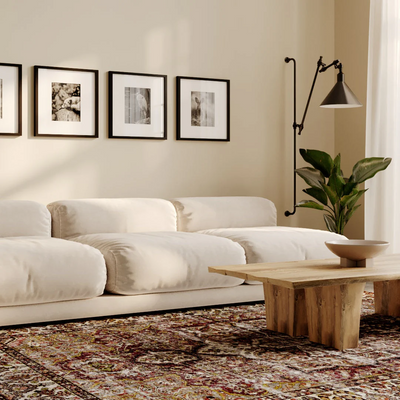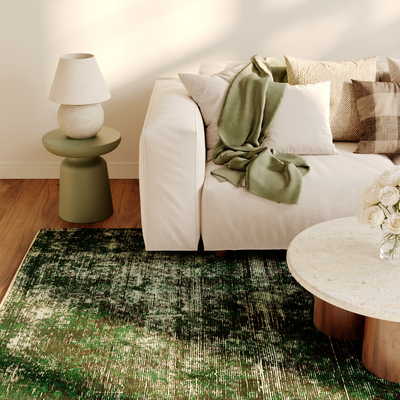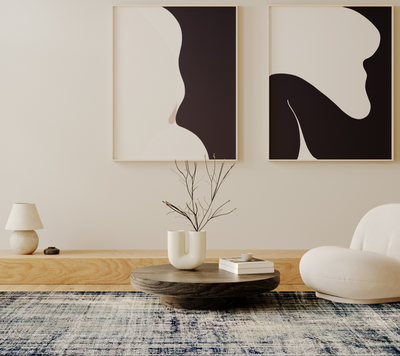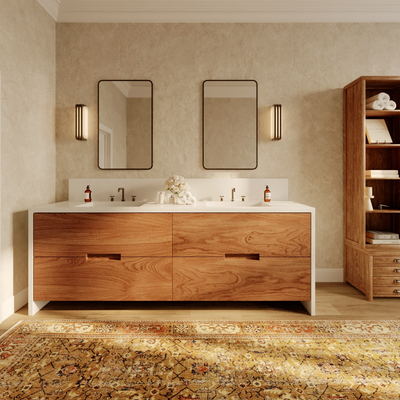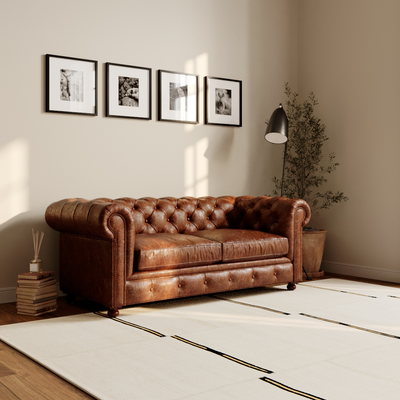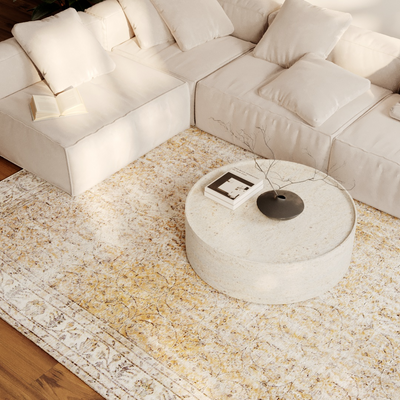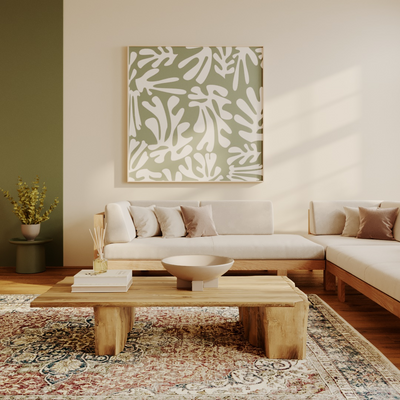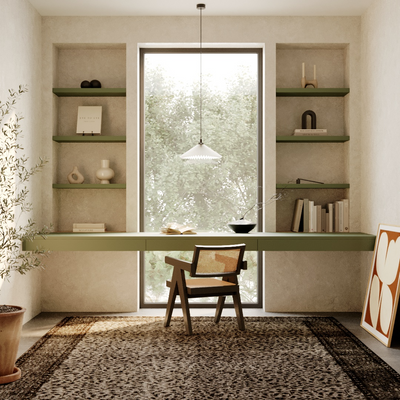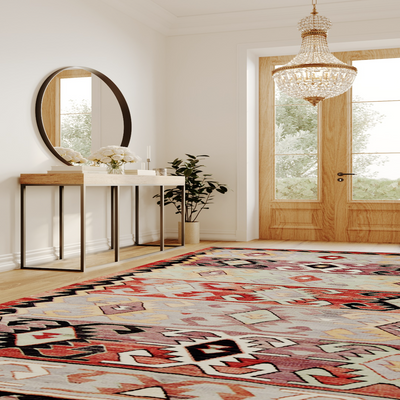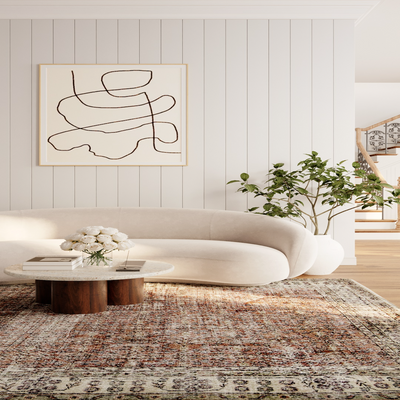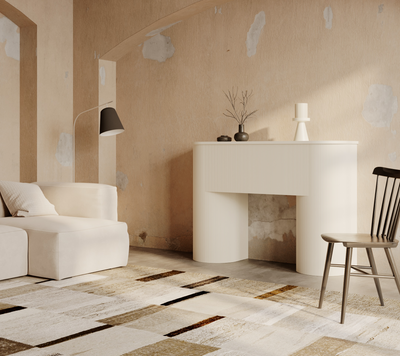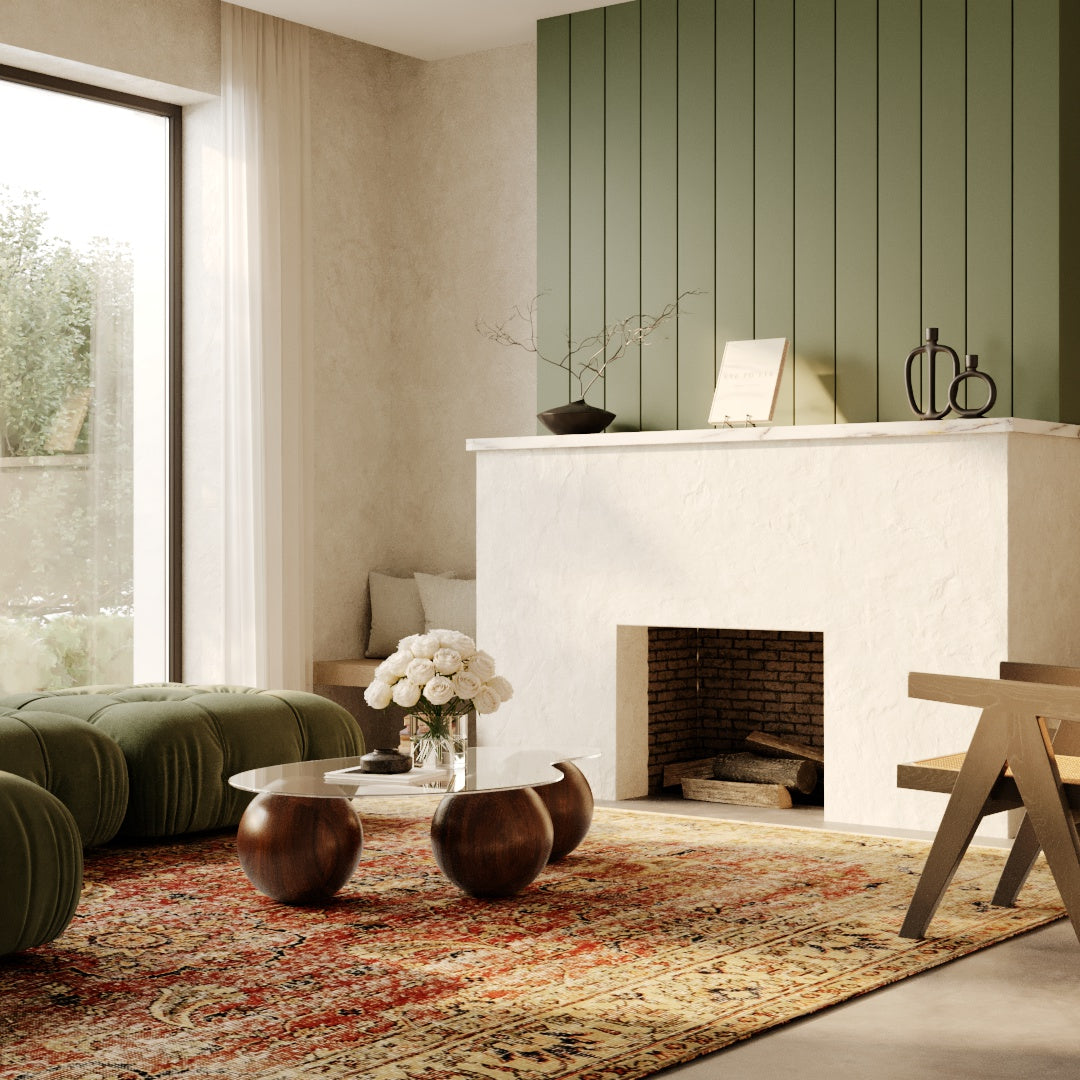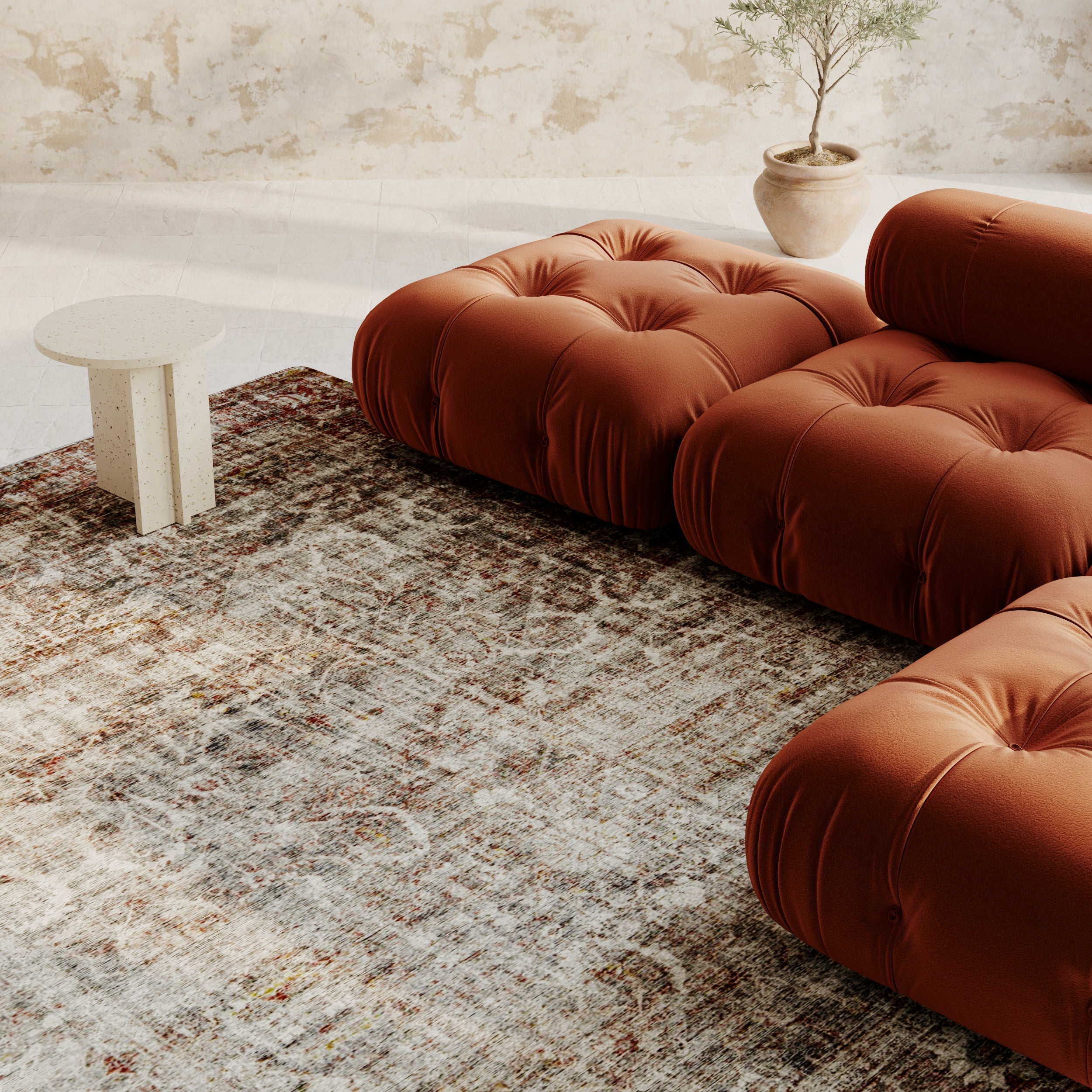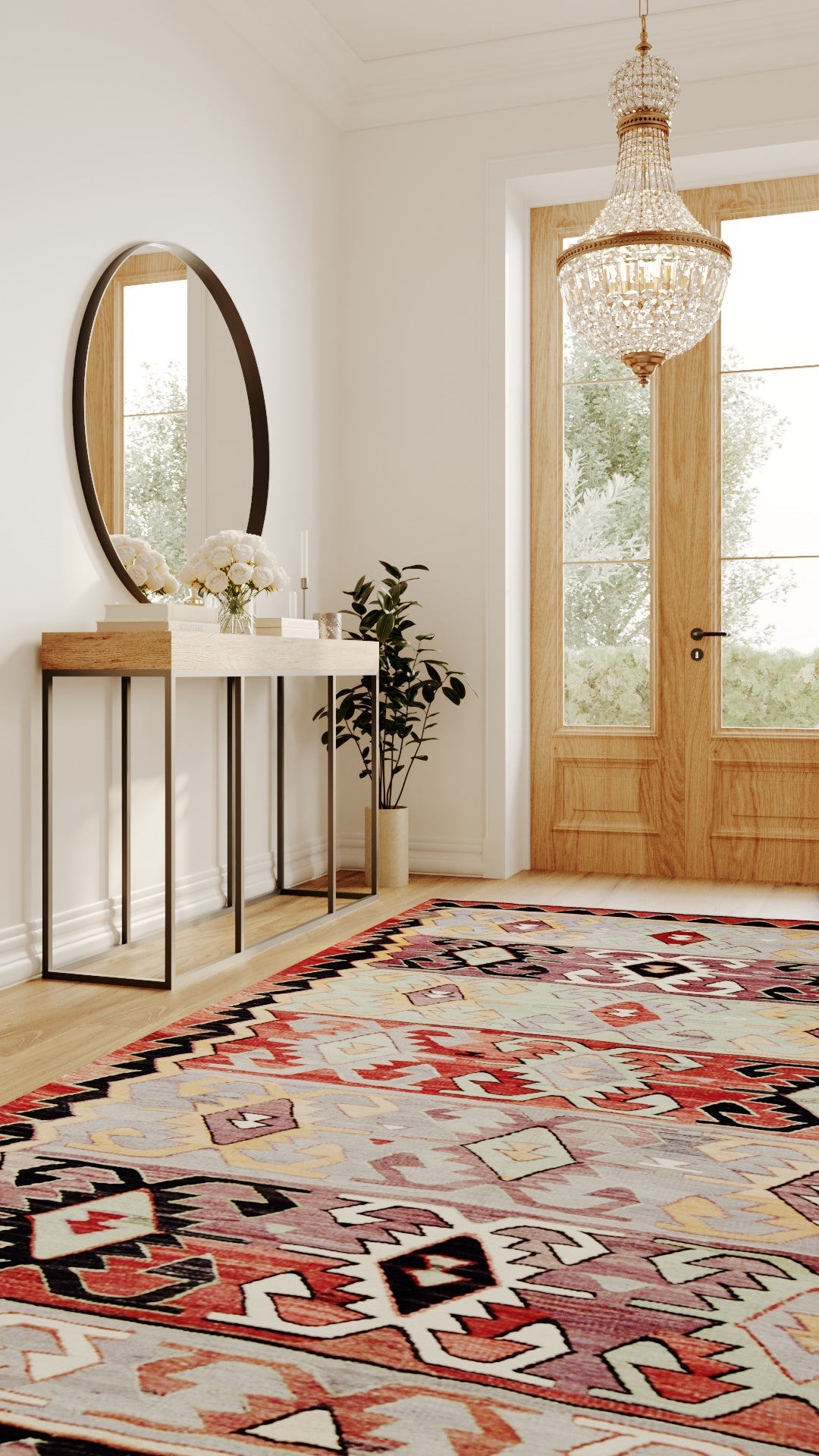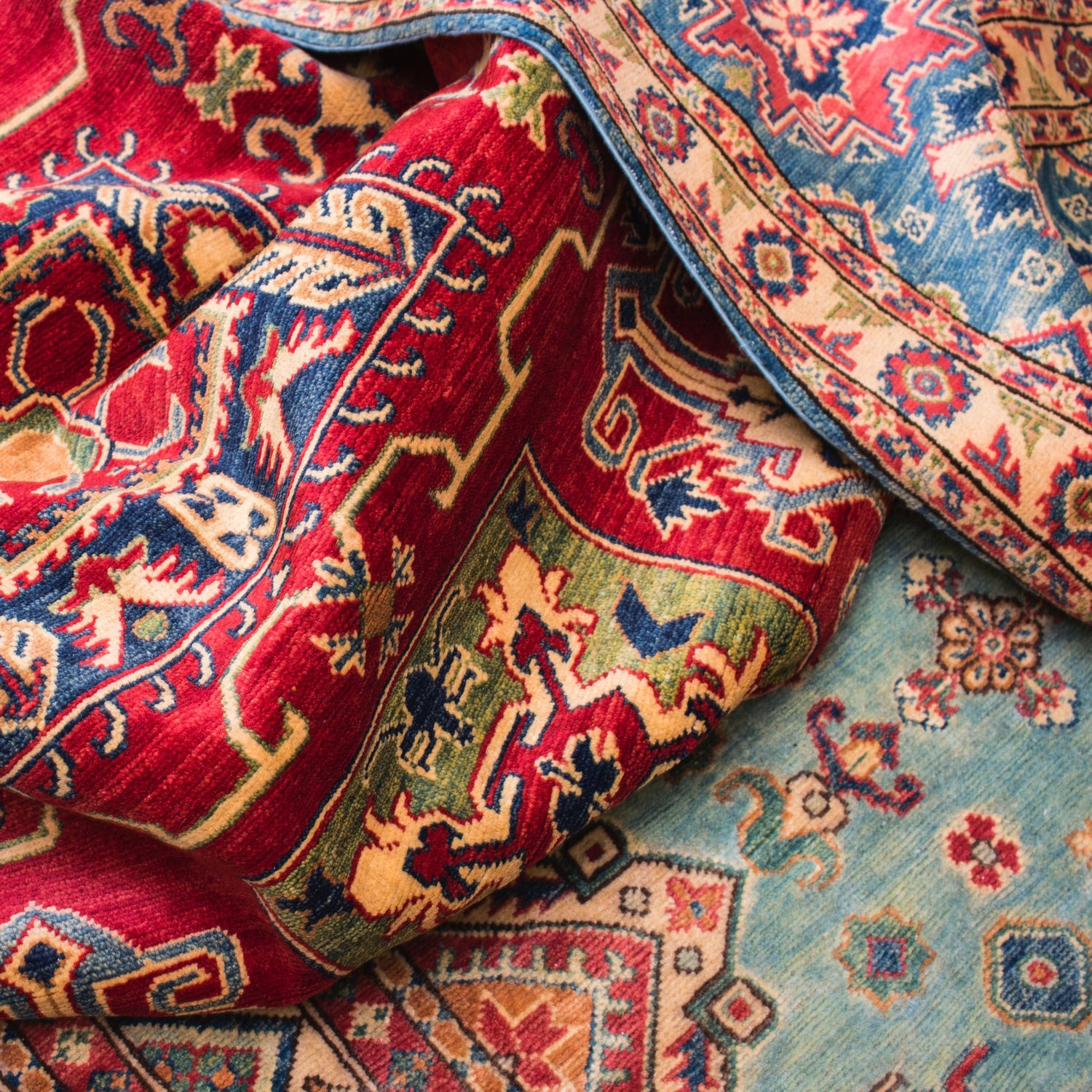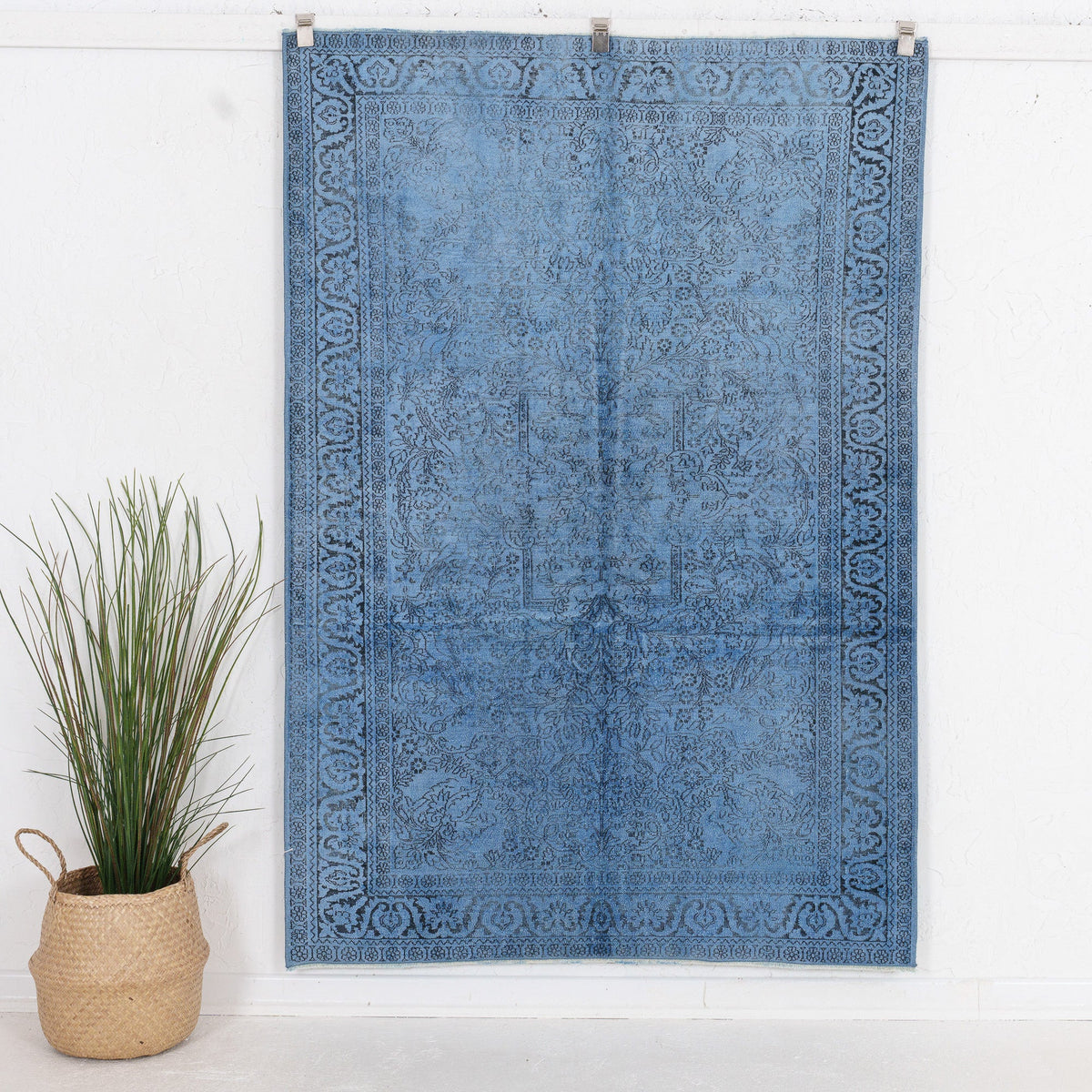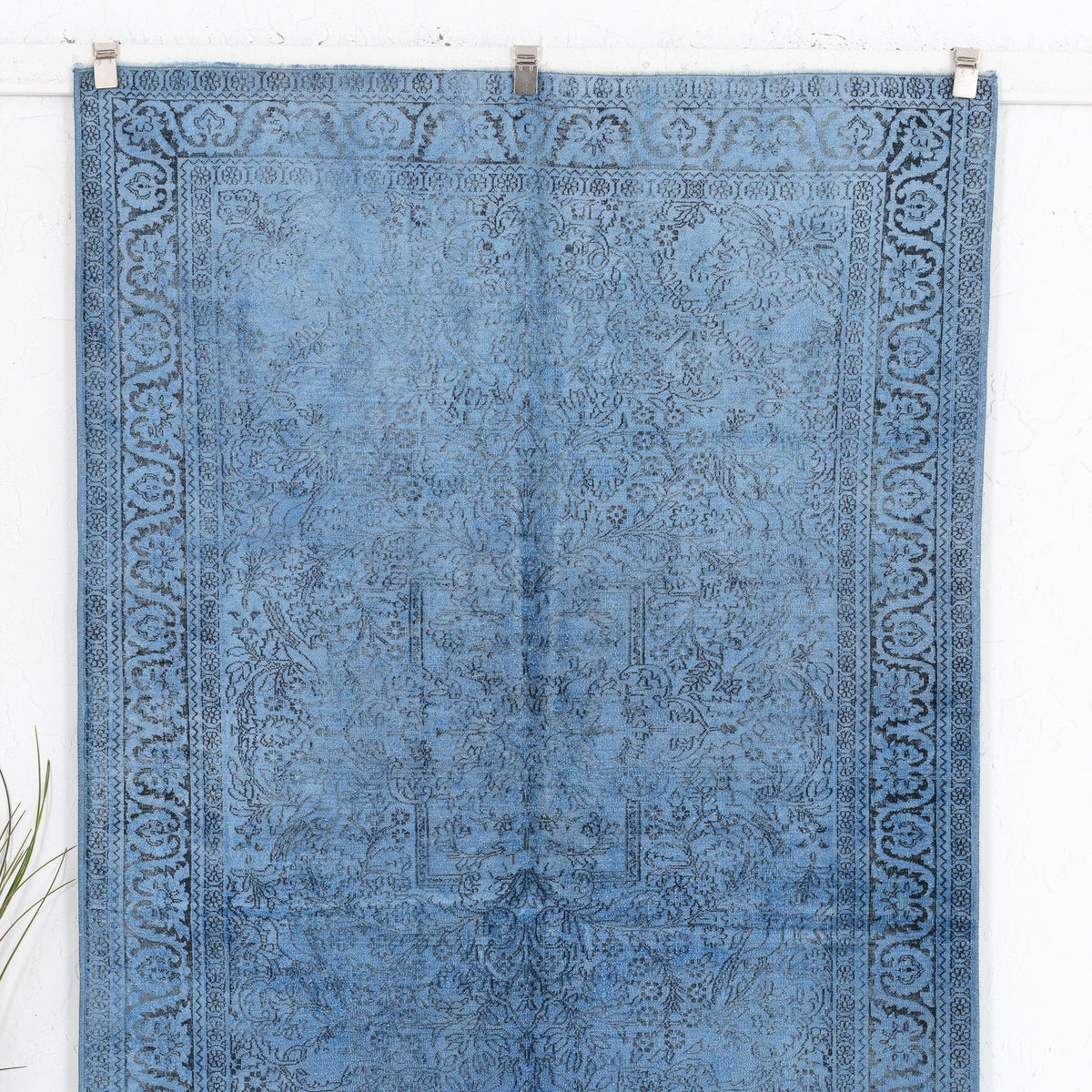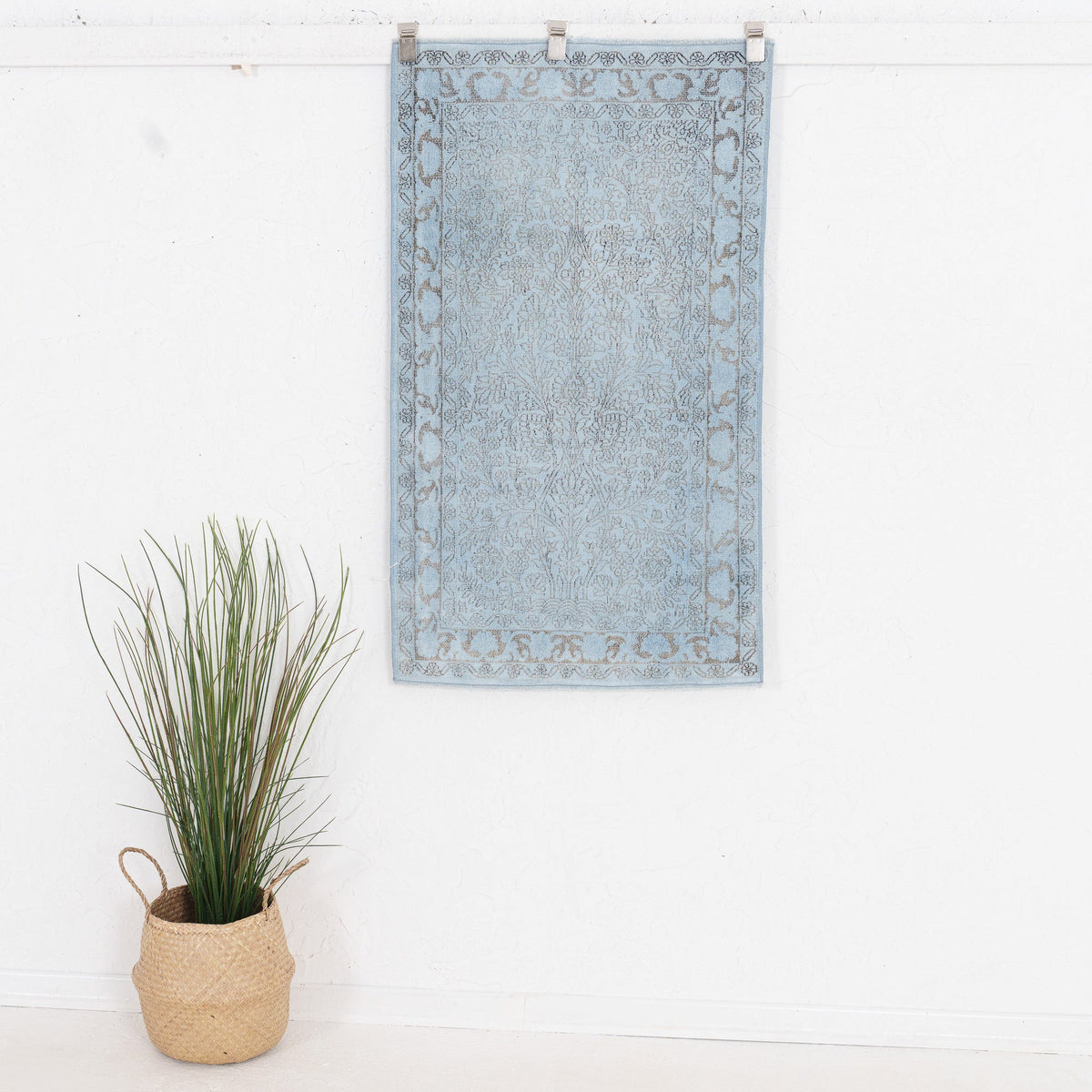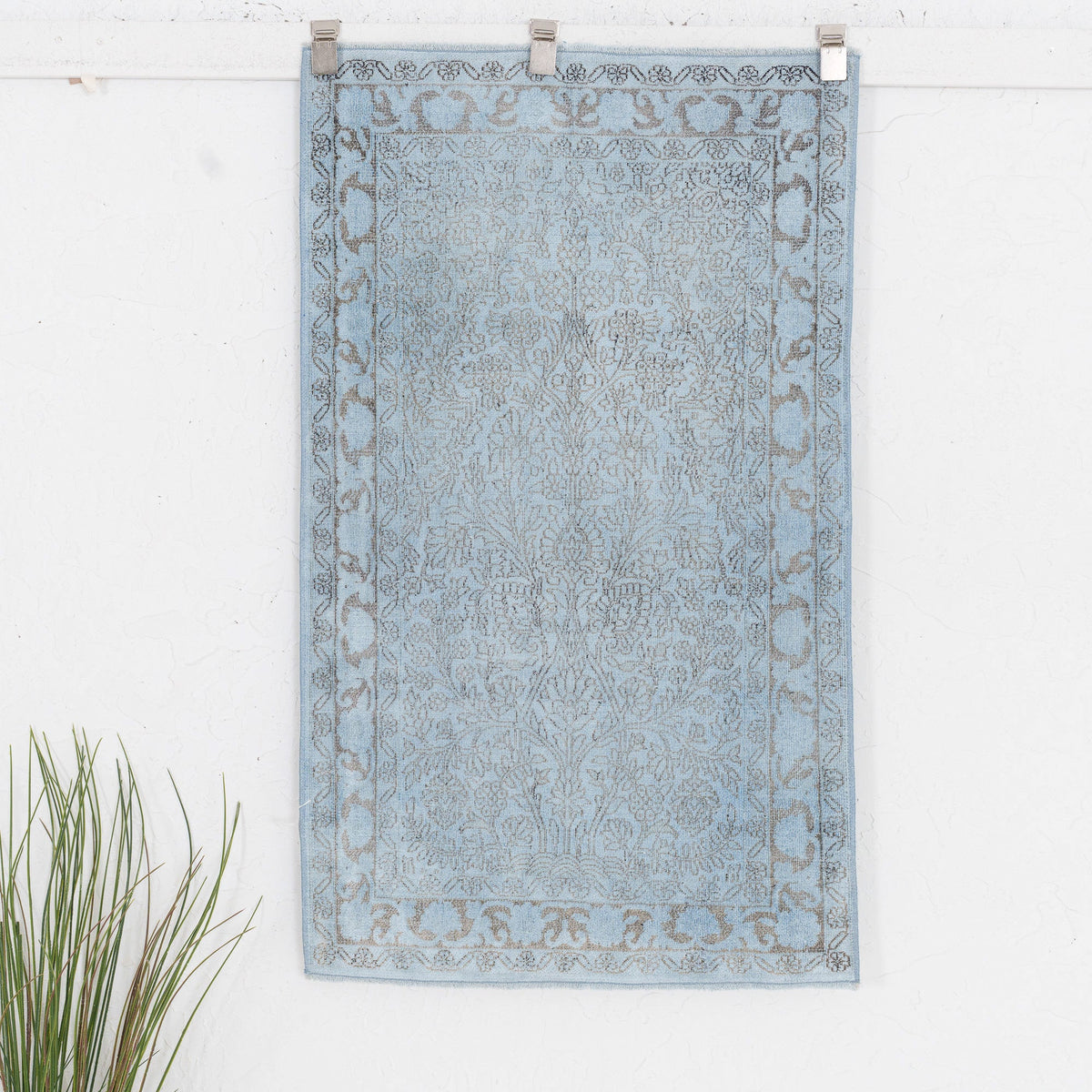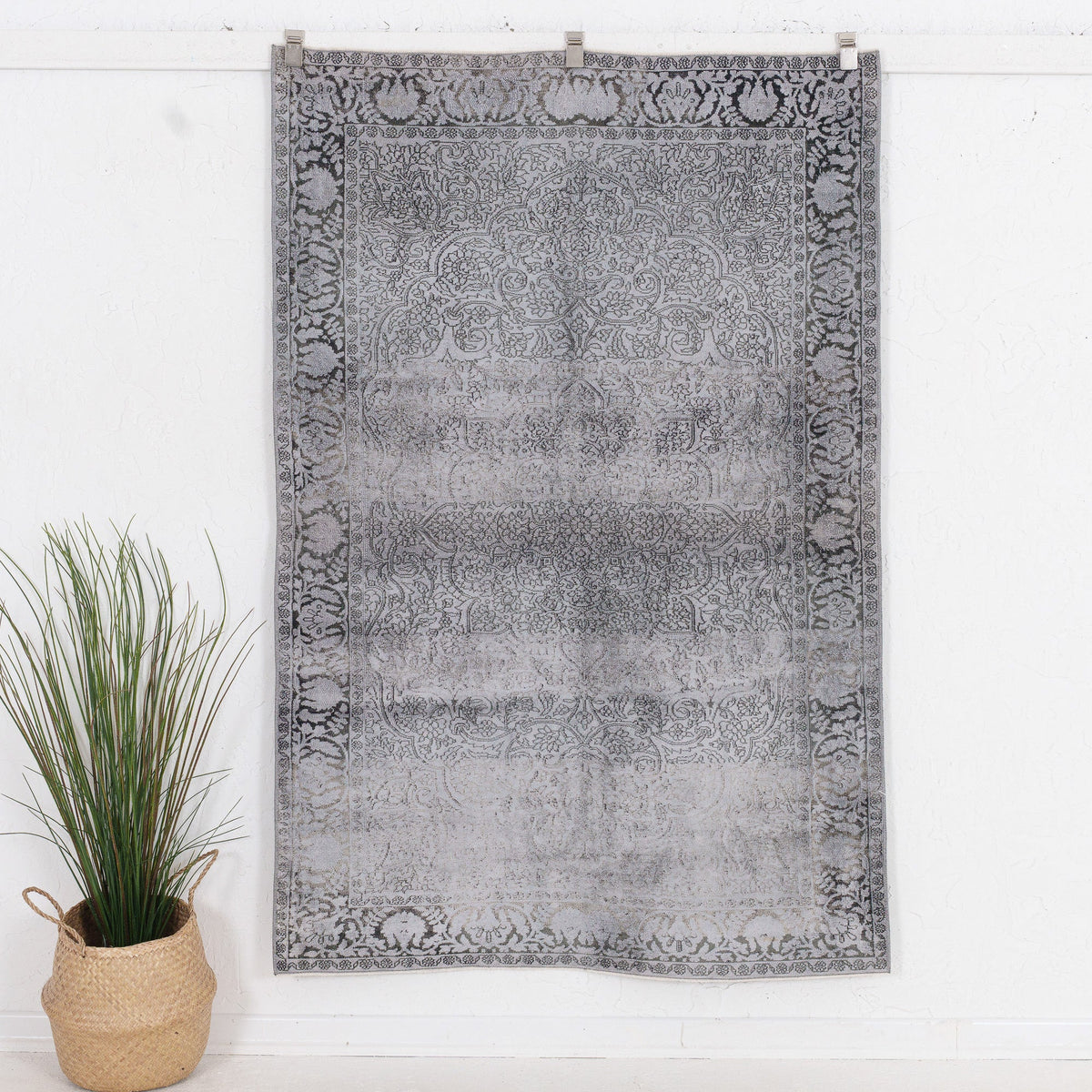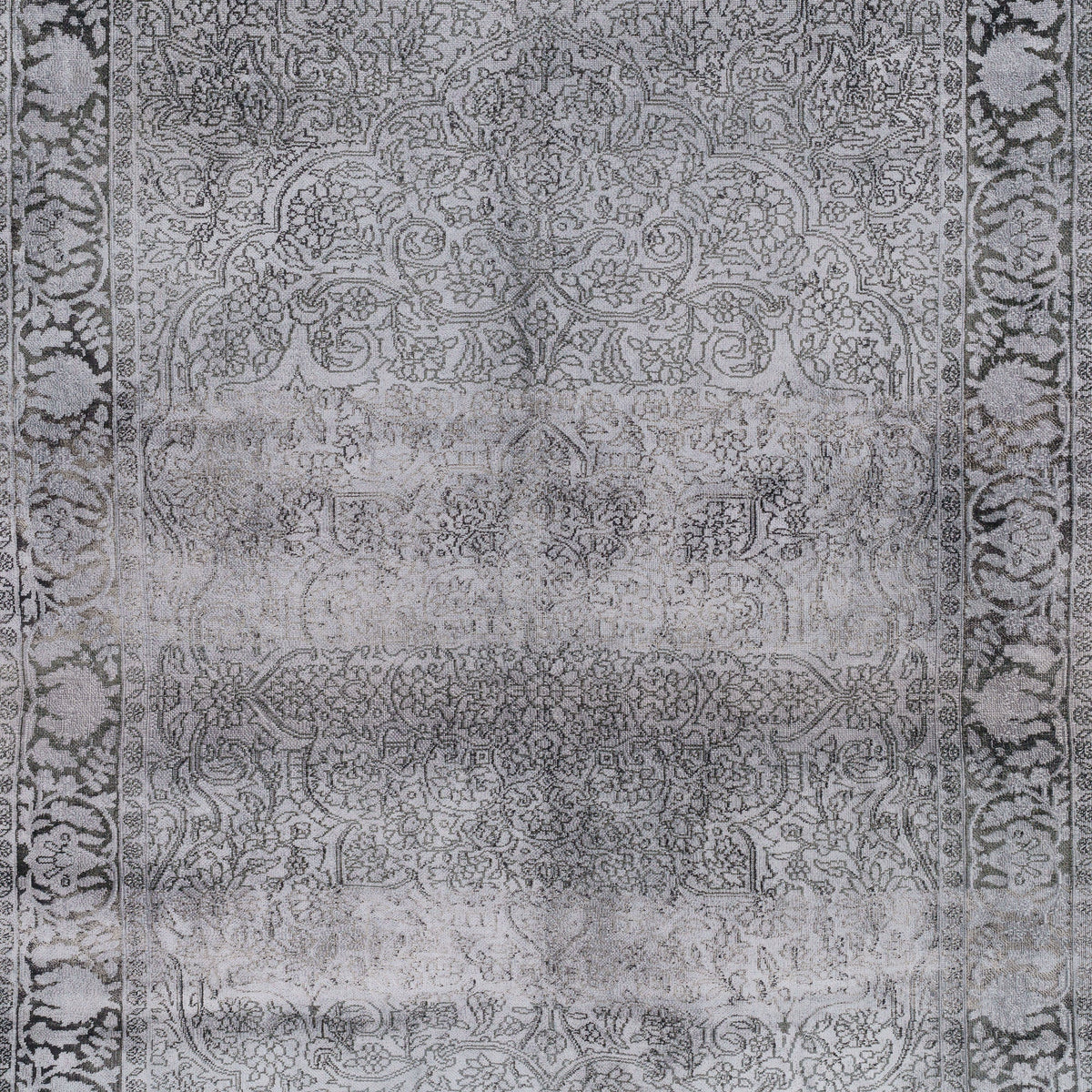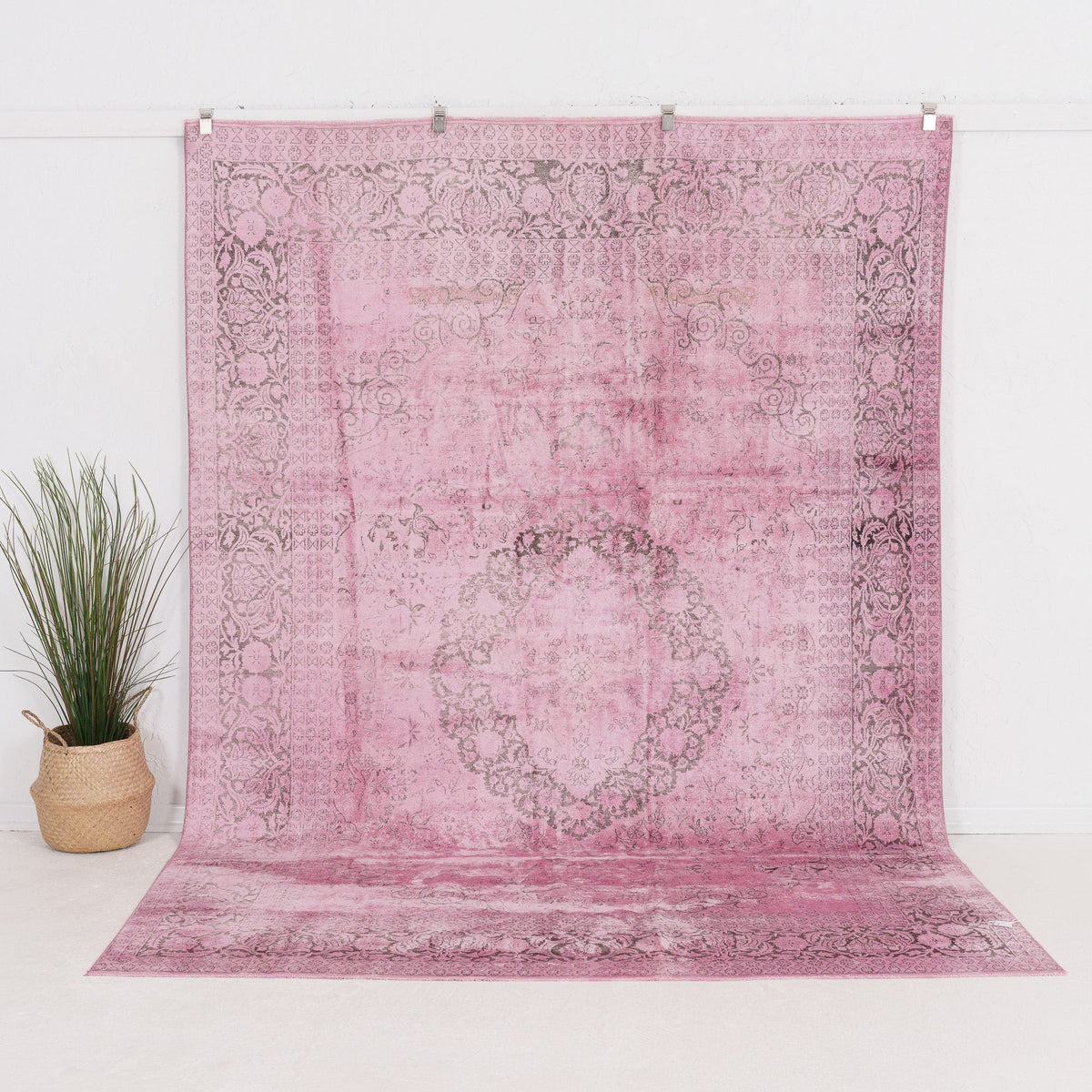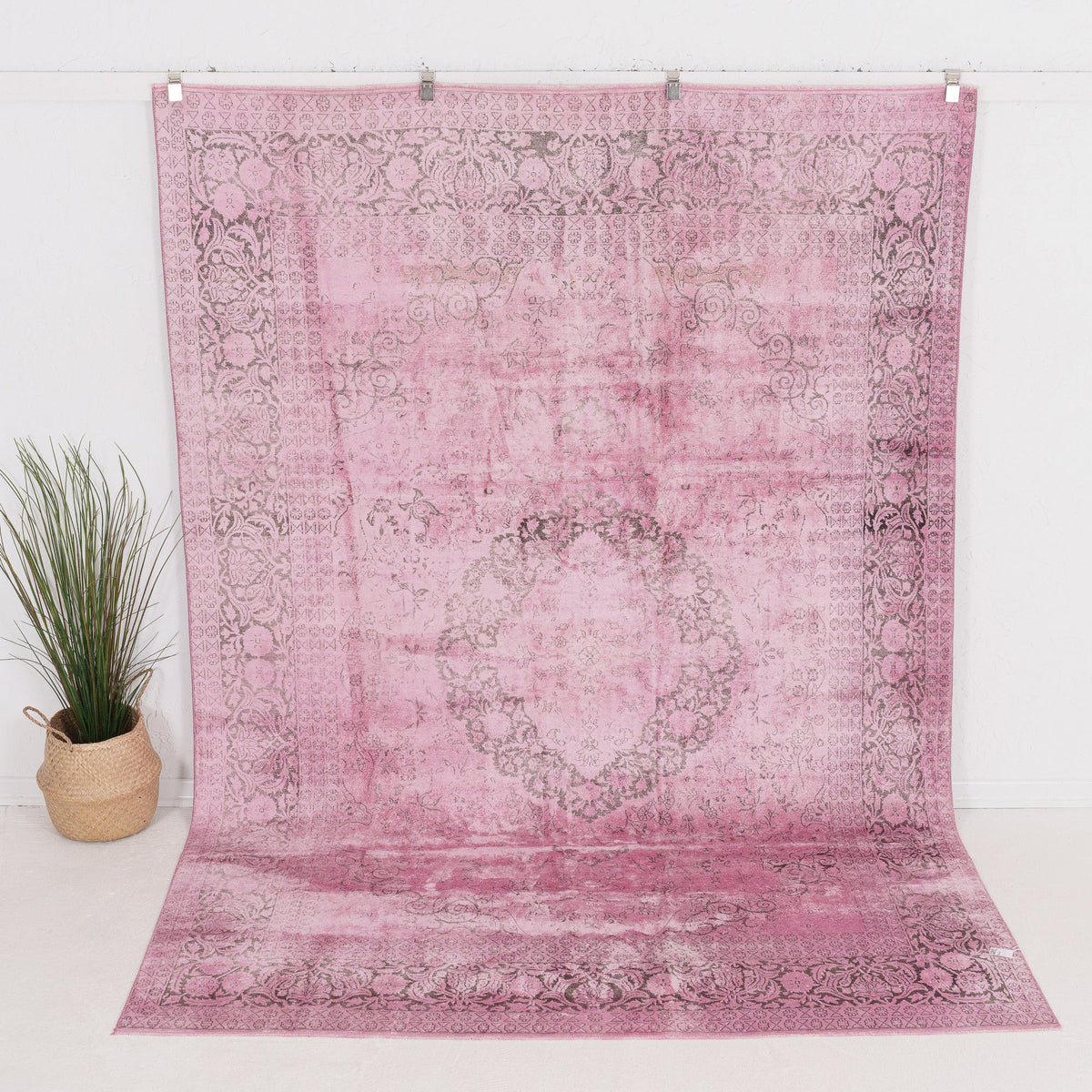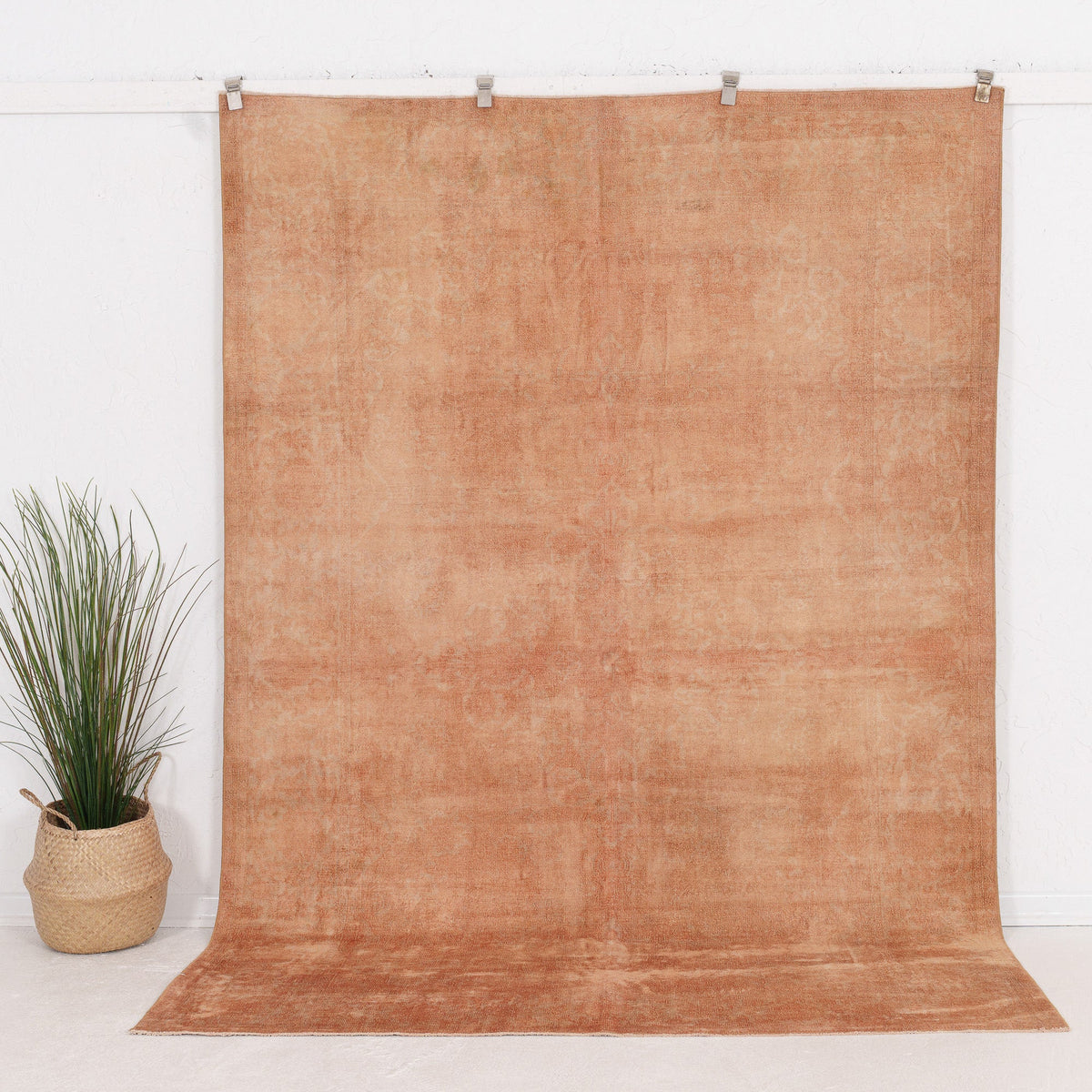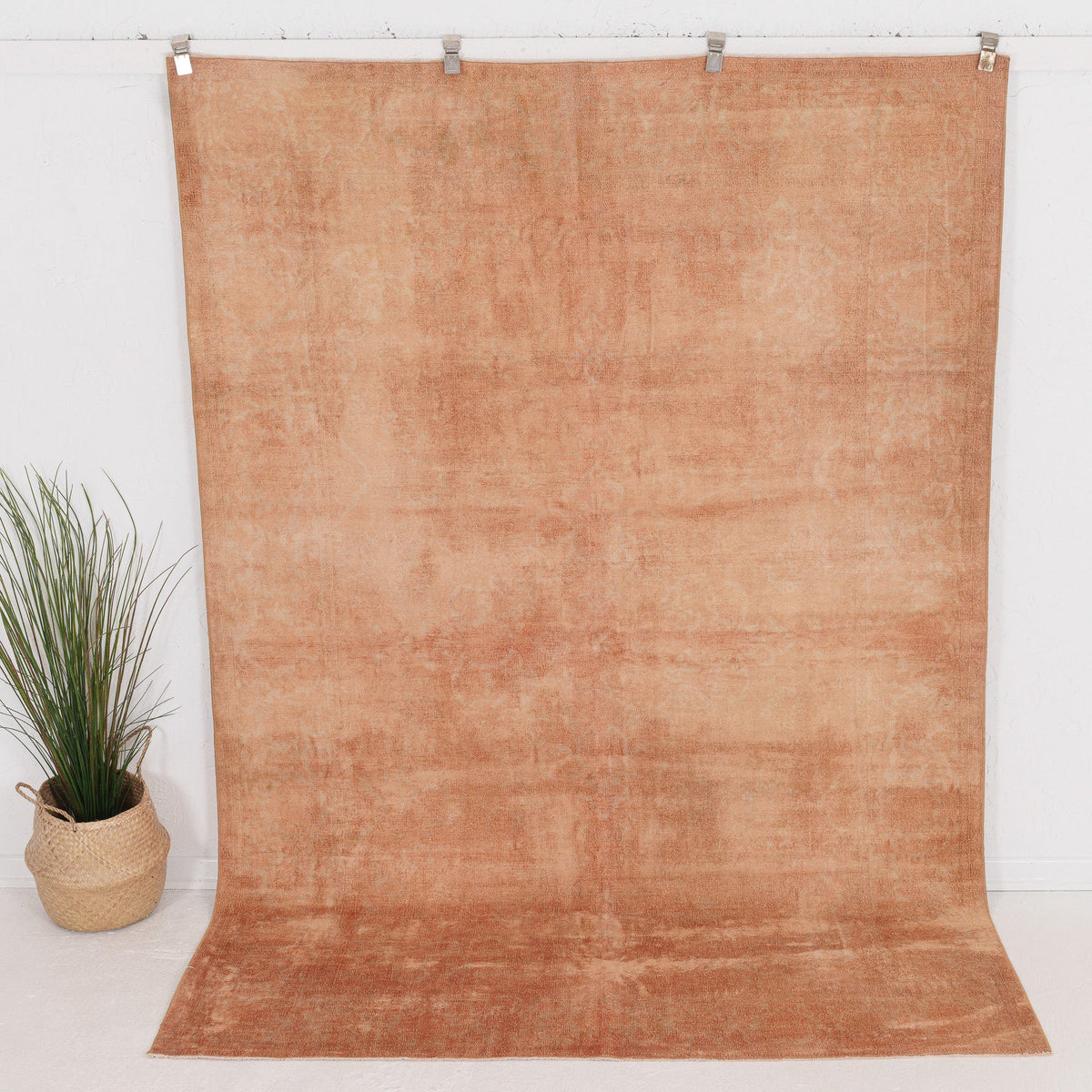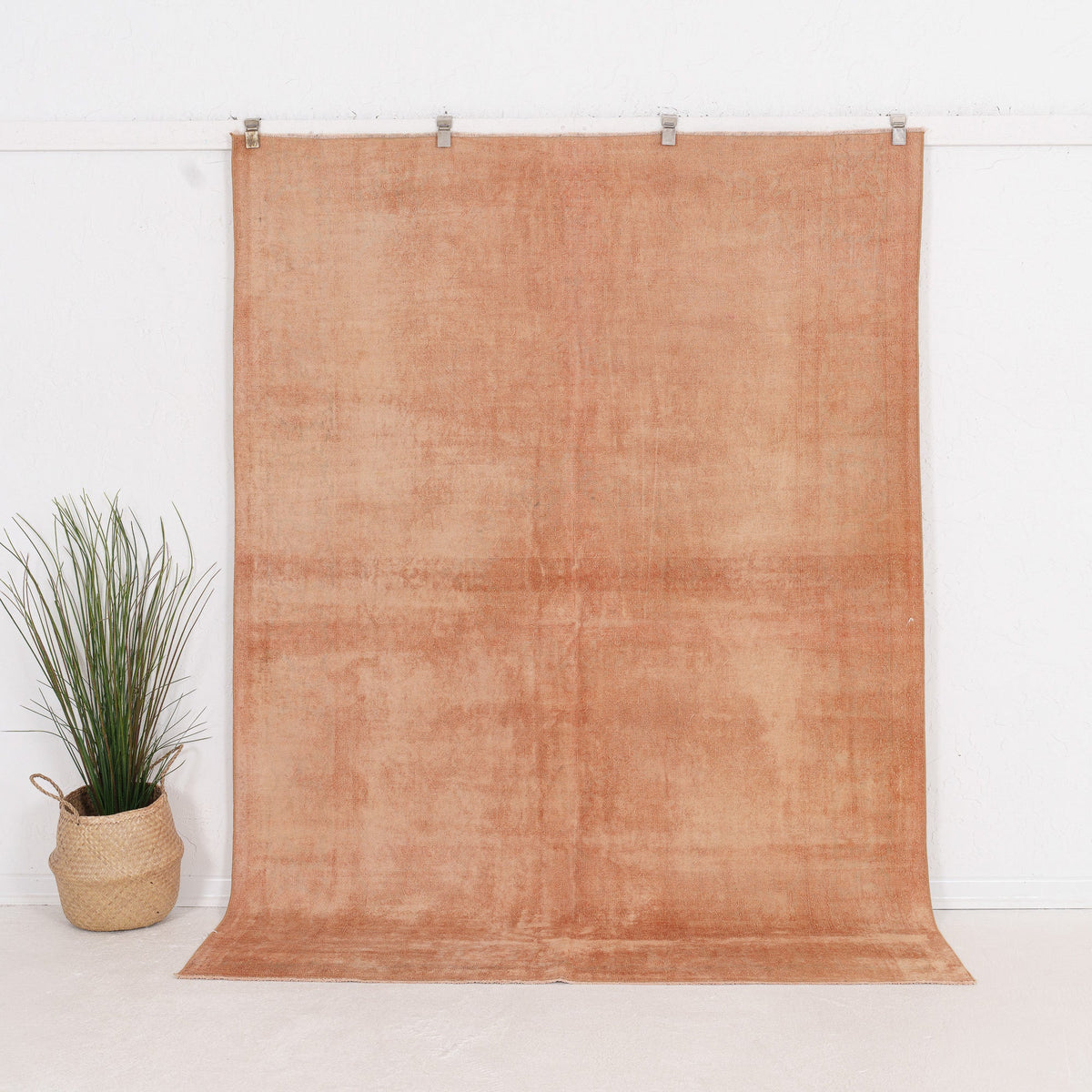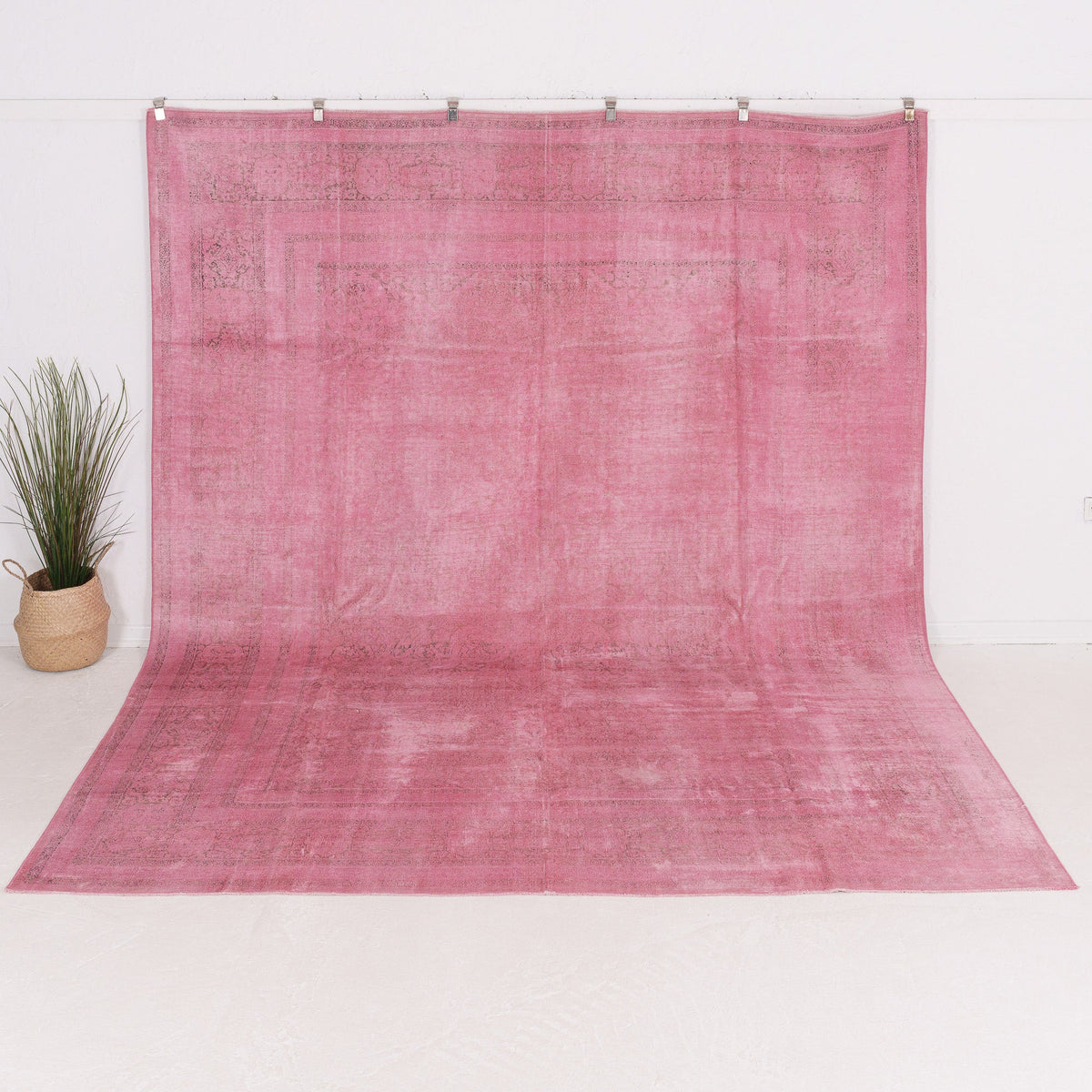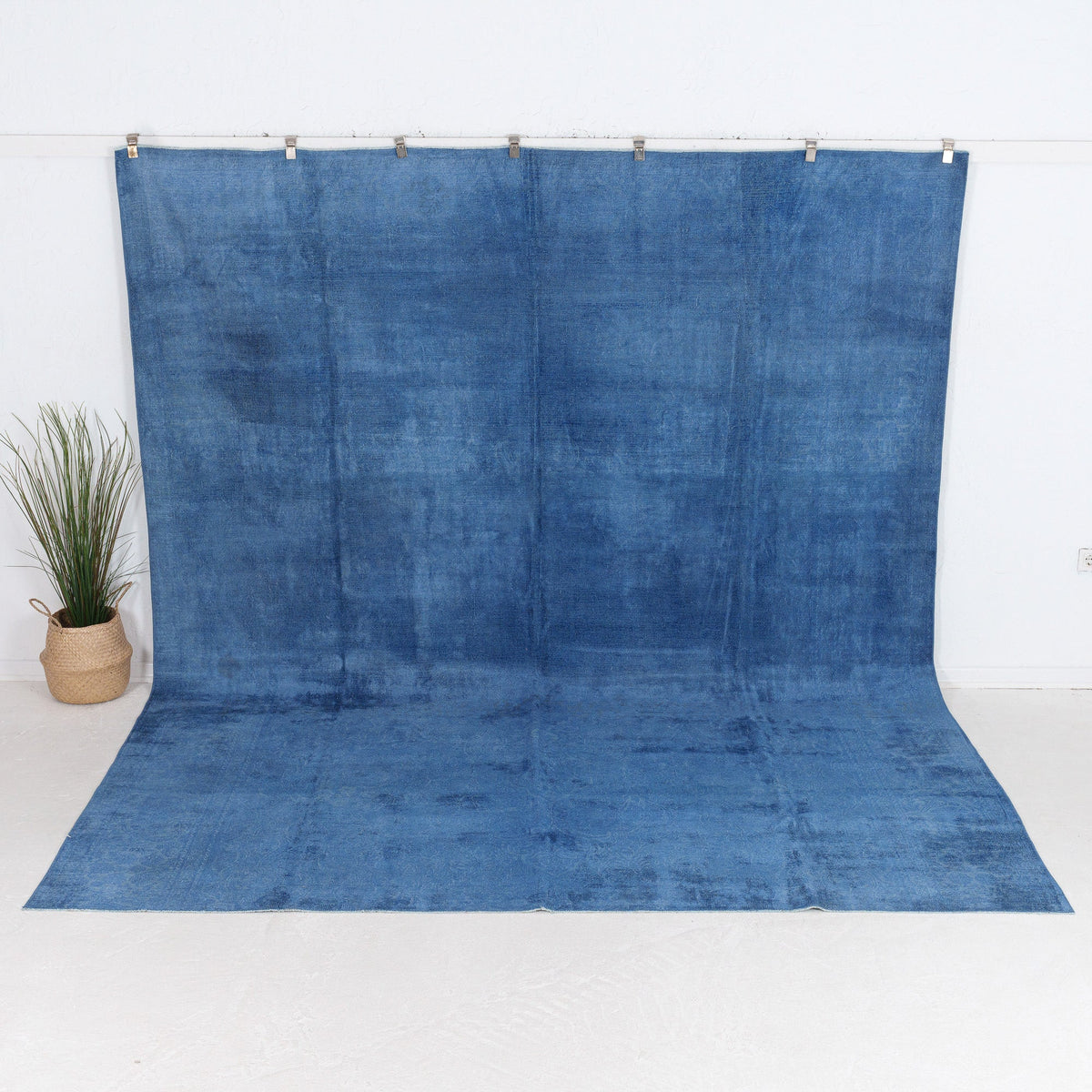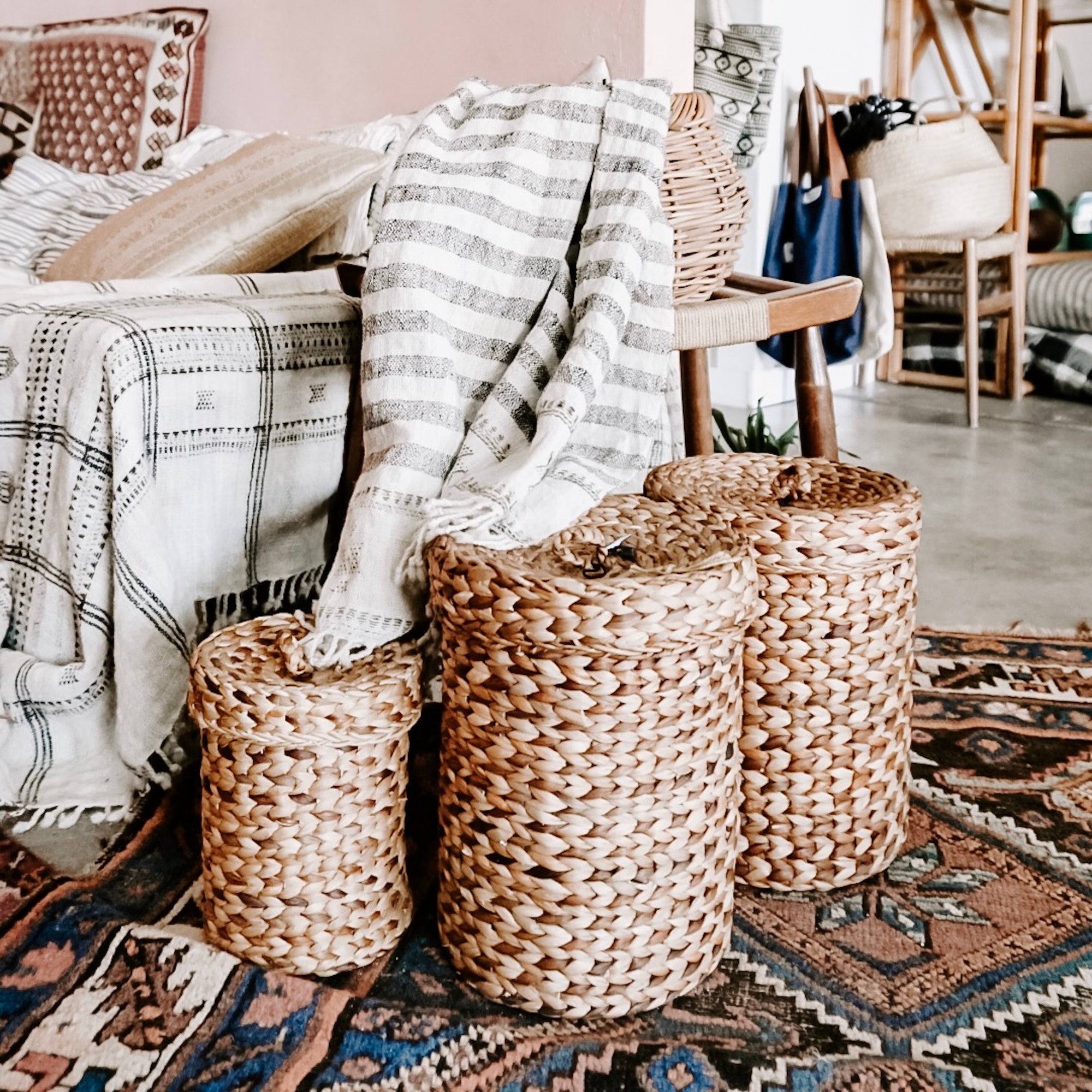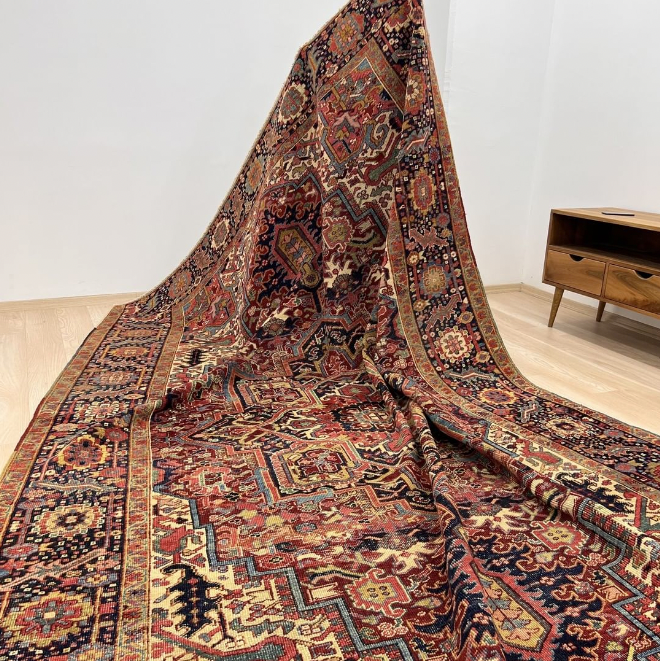Indian types of rugs are diverse in designs and patterns, just as diverse as Indian culture is. Ancient, handcrafted with traditional designs, these carpets have not failed to keep up with the changing trends and have a special place in every rug lover's heart. The ancient tradition of rug making, its craft, and artistry has been passed down to several generations to make up the marvel of Indian rugs you see today.
In this article, you will learn more about the history of Indian rugs, their types, and what makes these carpets unique.
Indian Rugs: Origin and History
Indian types of carpet can be dated back to the 1600s, or the time earlier than that when the ruling emperor, Akbar, introduced some carpet weavers from Persia. Carpets were not a common item, which was missing in Indian culture then. India was not a significant trader of carpets then. Skilled artisans from Persia were hired to make carpets for India, which is one reason that Indian carpets have a flair for Persian art in them. Further, the carpet business gained momentum as every royal household used it as a must-have utility. Even the prisoners were taught the art of making the rugs when there was a need for more laborers. Be it floral patterns, intricate design or synthetic fibers, the Indian Rugs with natural fibers are what you need to liven up your living space.

The Persian artisans were to practically introduce the carpet weaving industry in India, which started in places like Agra, Delhi, and Lahore. Indian rugs were made of materials like silk, sheep wool, and cashmere. Some royal rugs were made with golden threads and decorated with gemstones. Although antique Indian rugs have a lot of influence from the Persian style, they have an Indian essence in the styles and patterns. Natural dyes were extracted from plants and vegetables that give a splash of bright colors to keep up with the Persian-style carpets.
Indian Rug: Fact and Figures
Indian carpets are characterized by detailed shapes, bold patterns, and colors like Persian carpets. The standard prints, such as the geometric patterns, decorative florals, motifs, and so on, are hand woven. Nature materials are incorporated in rug making more often than synthetic fibers to maintain the authenticity that most rug enthusiasts look for. The quality of these carpets is also calculated in known density. High knot density means that the rug's quality is more compared to less knot density.
Indian carpets are known for their high knot density. These classic rugs have never gone out of style and are adaptable to new trends without losing their traditional charm. At the same time, it suits the demands of rug lovers who prefer contemporary and modern designs equally. Antique collectors and artists equally desire them with an eye for contemporary art.
One thing observed in Indian rugs is the density of knots. This refers to the quantity of knots per square inch. The knots can be between 25 to 194 knots or even more in Indian carpets resulting in over hundred thousands knots in each carpet overall. Many carpets are designed based on stories from real life.
Below are the standard specification of Indian rugs:
Type: Indian Rugs
Standard Knot Density: 90 - 450 KPSI
Characteristics: Based on Persian Knot
Indian Rug Types
Indian rug types can be classified based on the weave patterns and the region from which it comes. The type variation also depends on the cultural differences practiced across various states in India. But first, looks at the variation that comes from the variety of patterns:
1. Indo Persian
Indo Persian Carpets are known to have majorly originated from Iran, and Persian rugs have been woven since the 16th Century. These oldest types of carpets are usually hand-knotted and are characterized depending on the number of motifs used in the rug design. Standard designs like plants, flowers, culture, folklore, and royal lifestyles define the traditional carpet. Weaving Persian carpets is a tedious process compared to other rug types because of the complexity of weaving the busy designs. Some designs may take up to a year to complete, depending on the number and tightness of knots, quality and size. Major districts that produce Indo- Persian rugs in India are Varanasi, including Mirzapur, Bhadohi, and Gopiganj. Other manufacturers include Jaipur, Shahjahanpur, and Agra.
2. Silk
Indian silk carpets are highly valued as they add an extra shine and are lustrous among all types of carpets. Often referred to as Kashmiri carpets, silk rugs have their distinctive style in color, design, quality, and durability. Silk rugs are hand-knotted on warp threads and carefully woven to achieve the intended pattern. Silk carpets are expensive owing to the extensive manufacturing procedure of silk threads. The traditional weave patterns, durability, and high knot density also add to the price value. Silk suzani rugs are an example of aesthetically stunning rugs with exotic colors that also feature Bohemian art.
3. Wool and Silk
The combination of silk and wool material in rugs is one of the exquisite artwork creations with magnificent designs. Mainly adorned with floral designs, the rug pile is combined with wool weaves which adds to the rug's durability. Silk carpets are also used as an alternative to Persian carpets without compromising on the visual appeal when it comes to affordable prices. Jaipur and Agra are the few places where you can find wool and silk combo carpets. They are popular amongst rug buyers looking for a cost-effective silk carpets option.
4. Hand-Tufted Rugs
Hand-tufted rugs are standard types of rugs that dominate the carpet world because of their designs, weaving speed, and affordable cost. These styles are popular in Indian rugs for the level of comfort created by the tufting process. Made with the help of handheld tufting tools, hand-tufted carpets are known to last for longer years. The weaving cloth is usually based on natural materials that are commonly used as the base synthetic fibers but are more economical at the same time when compared to hand-knotted carpets. Panipat and Bhadohi are major manufacturers of hand-tufted carpets in India.
5. Ziegler
Few would have heard about Ziegler carpets as unique as their name and their making influences the historic North West frontier. These rugs are hand-knotted and woven using the Ghazni wool yarn to make traditional floral designs. Being low pile rugs, Ziegler carpets are characterized by their irregular surfaces that contribute to their uniqueness. They are well-suited for contemporary furnishing. These standard colors are rust, beige, mustard yellow, red and brown to suit the traditional designs. Neutral and pastel colors were introduced over time to suit the modern decor. Agra is one major producer of Ziegler rugs.
6. Recycled
Consumers' taste has also changed, with many environmentalists raising concerns, taking initiatives, and holding campaigns to save natural resources. From fabric to dyes, rugs have become eco-friendly with natural dyes, natural fibers and any discarded materials like tubes, tires, plastic, dead animals and so on, especially in India, where consumption is high. Products have been researched well, including recyclable materials and other used products.
With no loss of creativity, carpet warranty or durability, Indian rugs have shifted to nature-friendly rugs that are a promise for the future and mitigating risks from hazardous waste services. Disposal costs are many and if there is not proper disposal of rugs with toxic materials, it can harm the environment in an adverse way. As responsible citizens, everyone should be aware of rug recycling collection programs that make a huge difference for the environment and the society. Even a slight usage like the dyes used in carpets like mercury-containing products are hazardous products that later cause harm to nature and water bodies. Dyes can be made out of treated wood and wood ash that serve as natural dyes for dark colors and mixing. Initiative for hazardous waste collections and building hazardous waste collection centers can go a long way in building a sustainable use of products by consumers.
7. Kilim
Kilims have been estimated to have originated around the fourth millennium BC. Kilims are collectible items that are popular even in recent years and at many expensive prices. Kilims rugs are tightly interwoven with warp and weft strands with little to no pile. The horizontal weft strands are highlighted in the front, while the vertical warp strands remain hidden. Mirzapur Rajasthan and Panipat are the main cities in India that produce Kilim rugs that are also used as prayer rugs. They are also ideal for those looking for carpet for pets.

8. Decorative Indian Rugs
India has had its way of producing rugs, whether it is hand knotted rugs, hand-tufted, or any other type of carpets in India. Since the rug-making art was passed down from Persia, there are slight differences in the make and quality, making it affordable in one way.
Though the style and patterns of the rugs are influenced from Persia, making them less original, the affordable prices of Indian carpets compensate those who would like to own Persian-like rugs at reasonable prices. For instance, Indian cashmere carpets are more affordable than Persian silk carpets. Some Chinese and Iranian designs can also be found in Indian rugs. Agra or Amritsar are places that have been consistent in Indian rug making.
9. Ivory Rugs
Rich in color and bolder designs, ivory rugs are a unique subtype of antique Indian carpets. The rugs also have Persian, Chinese, and Iranian influences, even though they are woven by hand in India. Deep red, soft dark blue, and other dark colors are used as the dominant colors. Ivory rugs are statement pieces with a sophisticated touch of art and creativity. Made with fine silk pieces and exquisite brocade fabrics, these rugs are exclusively versatile for a luxurious setting. The trendy and beautiful ivory background is designed majorly in Agra rugs in high demand.
10. Floral Rugs
Floral Rugs never go out of style and set a theme for those who want to design their living space with floral designs. Primarily made in Lahore, numerous designs of petals, leaves, flowers, and other floral species are included in the entire rug area. Floral rugs are available in various shapes, including round, rectangle, and even hexagons. In one 18th-century layout, thick arrangements are usually the design scheme that is also a mark of Persian floral carpets. Indo-Isfahan carpets are other examples of floral rugs presented with flowering foliage.
11. Portuguese Carpets
Portuguese carpets are no different than Persian carpets, and one city attributed to the Portuguese influence in India is Goa. People in Goa adorn European dresses with a flair for Portugal designs, colors, and subdued shades. Pictures depicting Indian epics and hunting episodes are woven into these carpets with historical importance. Some have a mix of floral and faunal designs that make the decorations of any space lively.
Places to Buy A Handcrafted Indian Carpet
Some of the Indian rugs based on regions are:
AGRA
Genuine Agra rugs are excellent home decor items known for their sturdiness and ability to handle heavy foot traffic. Available in a variety of sizes, Agra rugs include shapes and styles that depict elements from nature for the ultimate forest feel. These designs include plant patterns or floral designs, animals, and humans. Creatively beautiful, the authentic and bold patterns of Agra rugs have been imitated into synthetic materials for affordable options. Classic blue, red, purple, and gold hues make Agra carpets. Being the first rug-making place, Agra uses vegetable dyes to make the weaving yarns.
AMRITSAR
Best for fully dynamic and functional floors, these aesthetically beautiful carpets showcase rich culture and warm color. For those who find it challenging to choose from various rugs, Amritsar rugs won't disappoint modern and contemporary interior designers.
Created in Amritsar, not far from Kashmir, these rugs are authentic pieces that stand out. Amritsar gets a lot of orders from America and Europe which when exported gets more value than in India. They also suit the western preferences of home decor with its unique shapes and hues. Muted colors of reds, greens, blues, browns, and oranges are used for a more realistic effect. Cotton and wool are the common rug materials used in Amritsar rugs.

UTTAR PRADESH
Bhadohi, Mirzapur, and Agra are the prominent places that produce hand-woven carpets in Uttar Pradesh. The specialty of Uttar Pradesh carpets is that the designs and rug making are profound as they have generations of knowledge and experience in carpet making.
BHADOHI
Bhadohi belt is known to produce the highest number of rugs in India that vary in knot count and simple design for one to choose according to their requirement. They specialize in hand woven and hand tufted shag rugs made of wool with Persian intricate design influence. Nepal and Tibetan carpet making are also known to Bhadohi native weavers, who often include historical monuments like the Taj Mahal that are appealing and important to antique collectors.
MIRZAPUR
Mirzapur is another city in Uttar Pradesh that produces hand-knotted and Hand-tufted Carpets in wool and cotton. Kilims and silk carpets are their specialties that weave Bohemian-type designs into the carpet for a touch of creativity and a splash of color. Hand tufted rugs are made with the help of a tufting gun. These carpets are ideal for modern home decor that is widely exported to other countries. Famed for the production of Durries, tufted Carpets, and a wide range of floor coverings, panipat has a variety of rugs including shaggy rugs.
KASHMIR
Known for Indian oriental carpets and rugs, Kashmir is a place known for its artistic expertise in carpet making. People travel from different places to purchase Indian oriental rugs that are authentic. Regarded as a perfect home decor item, Kashmir's silk and woolen carpets of Kashmir are a symbol of extreme craftsmanship, providing extra warmth and comfort. Kashmir carpet designs feature motifs, trees, birds, and other scenic elements. Traditional Kashmir silk carpets are woven with 320-900 knots per square inch.
RAJASTHAN
Rajasthan carpets are traditionally famous for the strength of knots and fine quality of hand-knotted woolen fibers. These carpets give the perfect royal look and luxury for ornamental decoration. Jaipur, Ajmer, and Bikaner are the leading centers for handmade Dhurrie Rugs. Rajasthan carpets are increasingly versatile, with soft and hardback covers and a mixture of wool and silk materials that are worth the high price.
JAIPUR
Jaipur was another major center where carpet weavers from Afghanistan are known to have settled and flourished here. It also holds a one-day collection event for rug lovers to explore their options. Bold colors and geometric motifs are significant parts of the carpets that symbolize Afghanistan's carpets.
How to Clean your Indian Rugs?
Indian rugs are beautiful and unique, but they require special care to keep them looking their best. Being antique carpets with bolder design, they need special care and attention.
Here are some tips on how to clean your Indian rugs:
- Vacuum regularly using a low-powered vacuum. Avoid using a beater bar, as this can damage the fibers. Take special care of your bamboo silk. It is not the same as cleaning yoga mats.
- Spot clean spills immediately using a damp cloth, mild detergent and cool water. Do not scrub or rub the stain, as this can cause it to spread. Ensure that the visual impact is not affected.
- Deep clean your rug every six months to a year using a professional rug cleaning service. This will help to remove built-up dirt and grime, and will also help to prolong the life of your rug.
Indian Rugs: A Beautiful Asset to Own
Over the years, traditional Indian carpet styles have become a mark of luxury across the globe as India became one of the major carpet manufacturers. Home décor is never complete without carpets, and Indian carpets have been sought after to be included in home furnishing around the world. Including carpets with Persian knot designs in home living space designs can alter an area's entire feel and appearance. Handmade carpets add an extra layer of warmth and coziness to interior room spaces. Handmade carpets are the perfect utility that can be used to revamp a modest room to an extraordinary one. Compared to other countries, Indian carpets make it possible for people to purchase rugs at affordable prices without compromising on quality.

